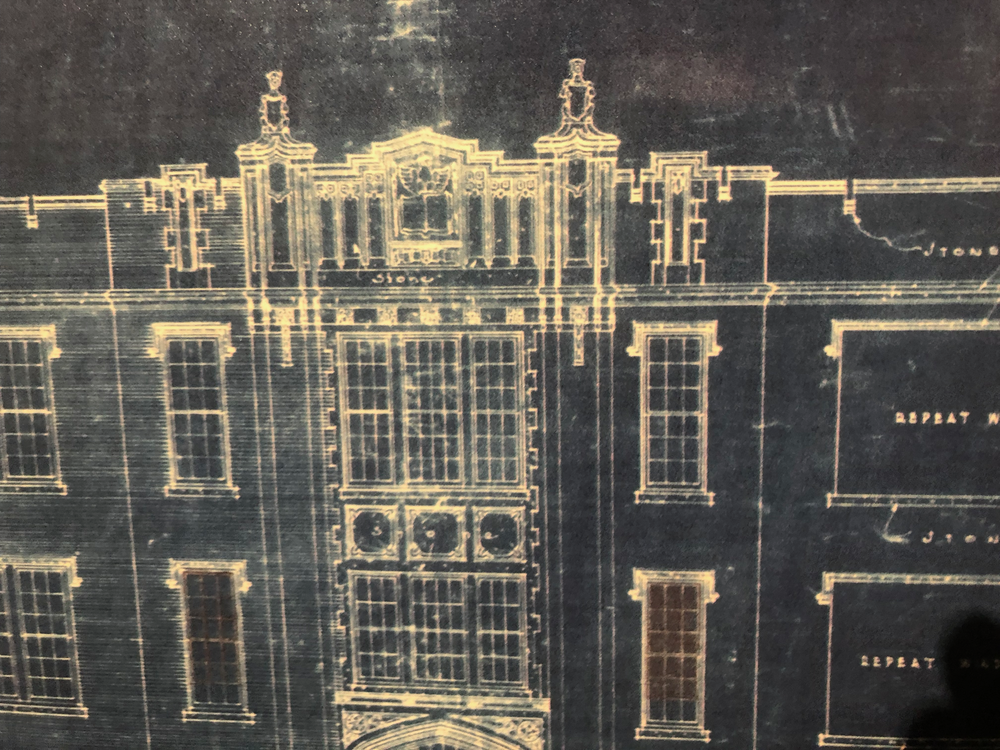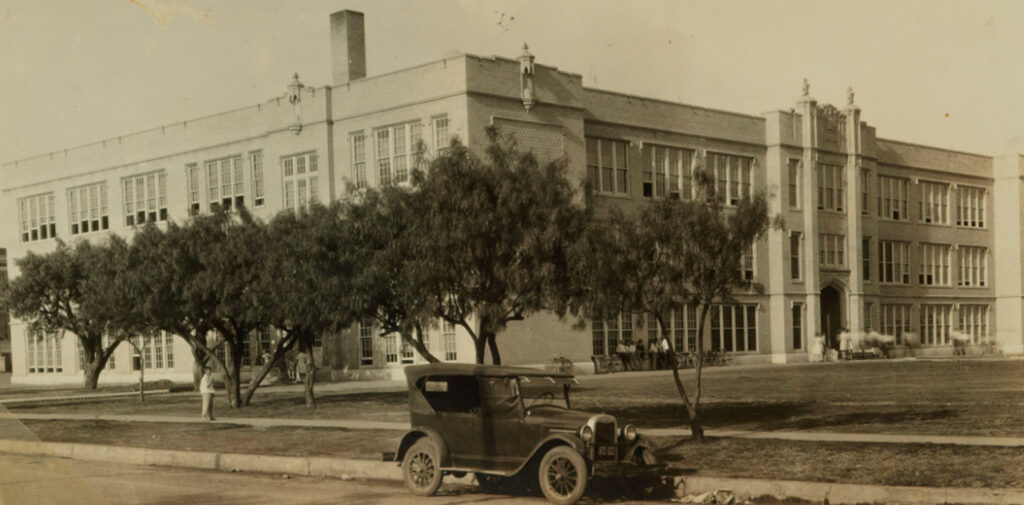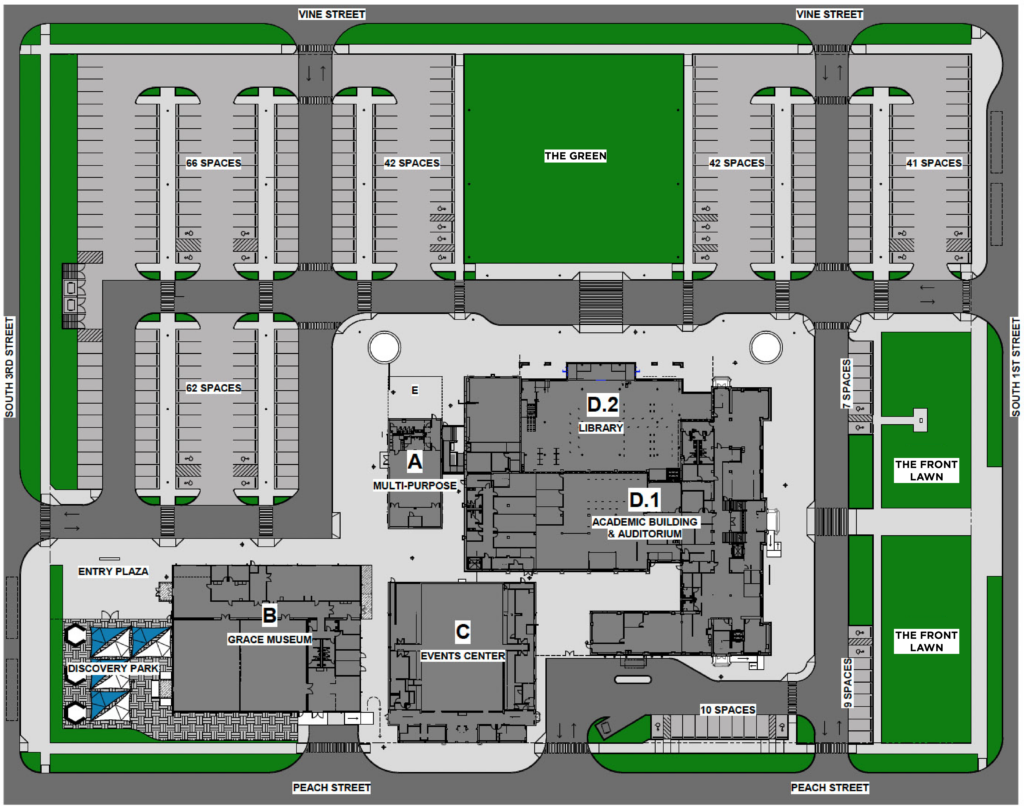The Abilene Heritage Square Project
A contemporary learning center open to everyone in Abilene and the surrounding area.

ABOUT THE PROJECT
The historic campus has witnessed generations of our community – memories have been created, educational pathways formed, and futures forged. Its purpose, then and now, focuses on opportunities for all. Abilene Heritage Square will serve as a multipurpose hub for lifelong learning, art and cultural attractions and innovative activities and programming. It will enhance the lives of residents throughout the region and encourage further growth and development.
What organization oversees
Abilene Heritage Square?
The project started with a group of Abilene residents who were concerned for the fate of the old Abilene High School building. They began exploring possible uses for it and eventually, after looking at numerous ways to repurpose the buildings, the volunteers organized a Board of Directors and began pursuing their plans for a community learning complex and gathering place. This board has partnered with The Grace Museum and The Abilene Public Library to make this project possible.
Abilene Heritage Square, Inc. was designated a 501(c)(3) charitable organization. Donations to the Abilene Heritage Square project are tax deductible.
How will this project benefit children in our area?
As a contemporary learning center, Abilene Heritage Square will include a state-of-the-art children’s library with traditional library books as well as age-appropriate access to technology and computers. The complex will also offer specialized activities for various ages such as LEGO® building and STEAM exhibits and learning experiences. Spark Science Center will focus on STEAM education and family experiences. Children will enjoy traveling exhibits, movies, and special events in the auditorium. The Green will be available to host activities for children and outdoor concerts, holiday celebrations, games, and more.
What kind of facilities are included in Abilene Heritage Square?
Abilene Heritage Square will allow access to the following facilities and organizations for everyone in Abilene and the surrounding areas:
- A state-of-the art Public Library in newly constructed facilities and historic spaces
- A renovated historic auditorium suitable for meetings, speakers, recitals, concerts, and weddings
- A satellite location of The Grace Museum called Spark Science Center that focuses on science and features permanent and touring exhibits
- The renovated Eagles Nest gymnasium — the perfect venue for events as varied as school proms, civic club luncheons, craft shows, family reunions, industrial exhibitions, wedding dinners, and more
- A catering kitchen that allows service for up to 400 people seated at tables
- A coffee shop adjacent to the library that will be available beyond library operating hours
- Classrooms for Stone Owl Academy, a program for high school juniors and seniors
- The Green — suitable for outdoor concerts, festivals, and special events
ESTIMATED ECONOMIC IMPACT
In Texas, public libraries provided $2.628 billion in benefits in 2015 and cost $566 million, a return investment of $4.64 per dollar. Libraries generate revenue by exposing guests to the surrounding businesses. * Source: Texas State Library and Archives Commission
Estimated on a $78 million project
Estimated jobs from construction (direct, indirect, and induced)
WHAT ARE THE COSTS?
More than 85% of the $78.9 million campaign goal has been secured in cash and pledges* from many Abilene and regional foundations, businesses, institutions, volunteer groups, and individual donors. A grant has been pledged and is available as a 1:1 matching gift.
Numerous individuals and donor-advised funds have also contributed, together with 100% of the AHS Board. The Board is currently seeking additional grants and Texas Historic Tax Credits. A public campaign is also in progress.
The spaces occupied by the Abilene Public Library will be on a long-term lease by the City of Abilene. AHS will earn income from the rental of the coffee shop, the auditorium, the Eagles Nest and other lease agreements. Additional funding will come from special events and exhibits.
*As of July 2024
HISTORY

History of Abilene
Abilene was established in 1881 by the Texas and Pacific Railway company. While it was originally a tent town, a proper city quickly began to emerge from the dusty streets. By the 1920s, Abilene’s population had grown considerably and a modern, vibrant, downtown life with new businesses and opportunities for entertainment was the heart of the town.
The opening of Camp Barkeley as a result of World War II introduced an entirely new dynamic to Abilene in the 1940s by bringing thousands of soldiers to the area. The presence of airmen in Abilene became permanent in 1952 when Congress approved the opening of Dyess Air Force Base.
Abilene has always prioritized education and worked to meet the growing town’s needs. By the 21st century, Abilene had two school districts as well as multiple private schools for its citizens to choose from. The commitment to education in Abilene can also be seen by its three universities and several colleges, the first of which opened in 1891.
Outside of the classroom, lifelong learning is encouraged by Abilene’s multiple museums and libraries, as well as other events that focus on education and the arts.
Preserving Our History
In 1923, well-known west Texas architect David S. Castle began construction on this Late Gothic Revival-style building. Castle contributed to the Abilene skyline by providing it with some of its most iconic buildings, such as The Historic Paramount Theatre.
In the 1920s, Abilene was rapidly growing which resulted in the need for more public schools. The decision was made to build a centrally-located high school on South First Street that would serve as a testament to Abilene’s dedication to public education. The high school opened in 1924, and would remain open as Abilene High until the new high school was built and opened in 1955 on Mockingbird and North 6th.
After the high school was relocated, the building became Lincoln Junior High. A notable change occurred in 1969 when Black students joined the school’s White and Hispanic populus as Abilene schools integrated.
The building’s name changed once more in 1986 to Lincoln Middle School, which would be its name until its closure in 2007. Over the century that this building has stood, it has been a center of education as well as a symbol of the importance of learning to the Abilene community.
With a continued mission for education, the building will now be transformed and preserved as Abilene Heritage Square.




